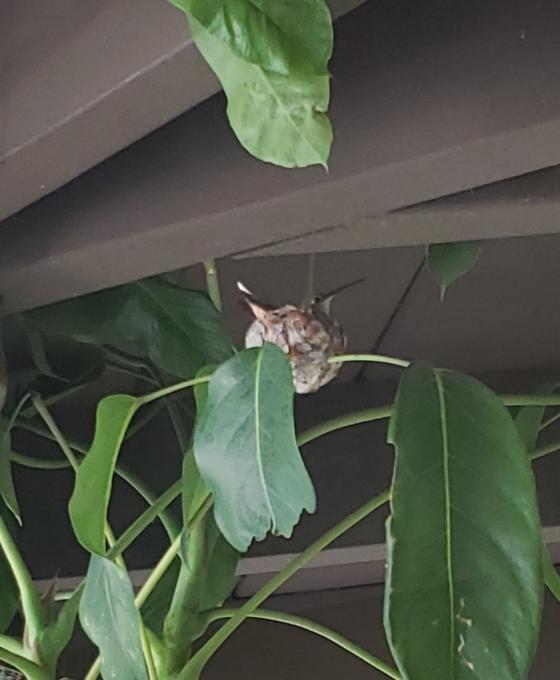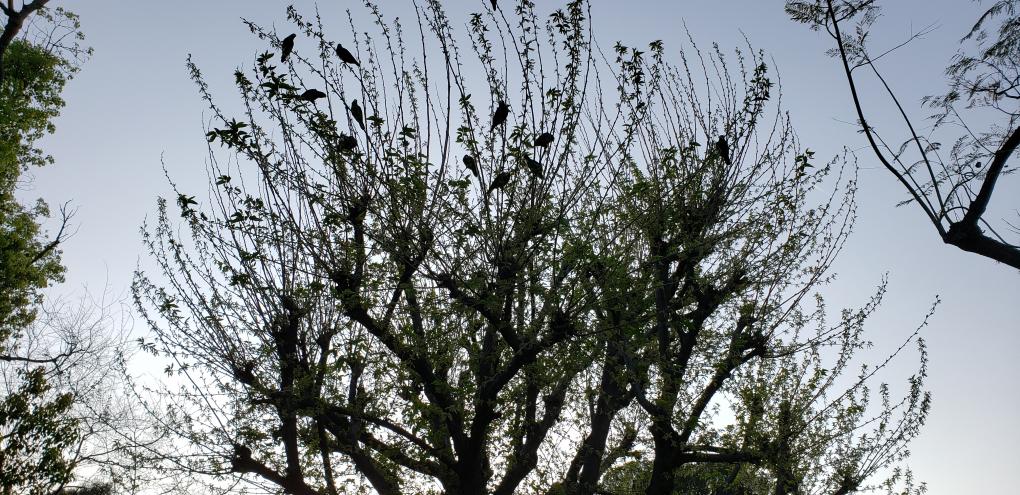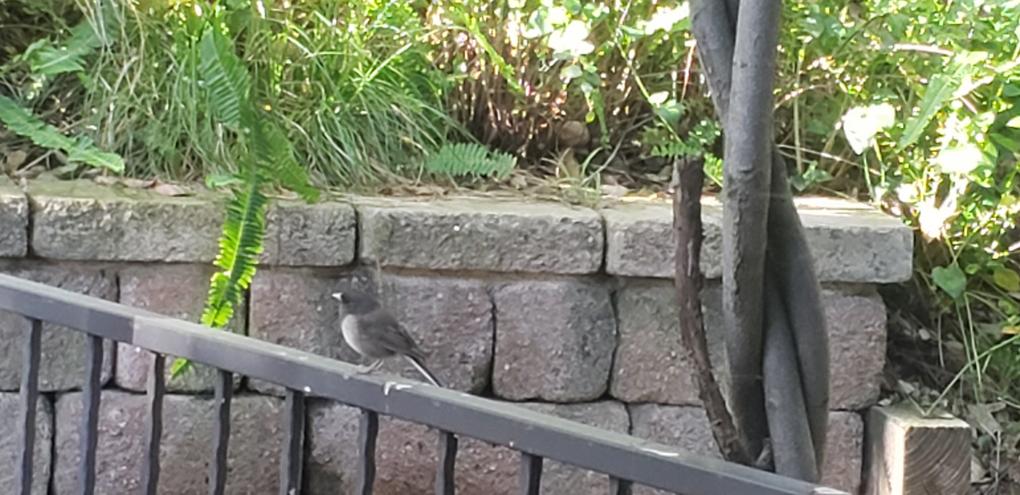Julie
Forum Replies Created
Viewing 13 posts - 1 through 13 (of 13 total)
-
JulieParticipantThe multiple banding method and the ability to track crows for 18 years. I did not know they lived this long. This is the kind of meticulous work that reminds me of Jane Goodall tracking primates. Fascinating to know there are such personalities in crows. Admirable work. Great to finally understand why they hang out in cemeteries.in reply to: Crow Research Techniques #737873
-
JulieParticipantFeel confident, also recognizing eye color is distinct compared to other birds is helpful.in reply to: Crow Not Crow #737864
-
JulieParticipant1. I would let them know that snakes and the abundant squirrels we have are more likely to be killing the nestlings, great fact I just learned from this course. 2. Our property has a large amount of open space and oak trees, we see them here all the time. I believe we have seen nests but will look more carefully now to see if the are crews’ nests. We also have seen them dipping garbage (bread, tortillas, pizza) in our backyard fountain to soften it before eating.... 3. We are in Southern California, so yes, both live hear. I will know now to look at the hard shape, tail and wing shape, and feather and flight patterns to identify. I believe based on the calls it will be easier to identify also. 4. I definitely know that other animals benefit from the “early warning system” crows provide when there is a predator in the area. We have bobcats and coyotes, and crows will often notify the entire neighborhood when a bobcat is coming through. The squirrels and smaller birds disappear. We humans appreciate the notification also, and when we hear the crows we go out to make sure the neighbor’s dog is in....in reply to: What is a Crow? #737859
-
JulieParticipantActivity 1 - this course has absolutely changed my thinking. I am now recording on eBird, and while we previously enjoyed our nightly walks, now we are on the lookout for birds as well, and really enjoying it it. I noticed that while I have lived here for many years, I never heard the birds like I do now. I hear them, and am listening, not just taking it in as background sound. Activity 2 - I was pleased to see that we are already doing a number of things to support the population. Our property is largely natural here in Southern California, lots of oaks and shrubs. There is a ton of bird life in the oaks, in fact the reason I even found this course was because I was trying to identify an owl on our property, and Cornell kept popping up with great info during my online search. The trees and shrubs that we do have planted support a lot of hummingbird life, lots of flowering trees. We just added two feeders to our backyard, and while it took about a week, the birds have found it! It is great fun to watch. Also, our cats are indoors. However, we do have bobcats...can’t do much about that, and they are part of our ecosystem. I would like to do better with the water bottle consumption, it’s pretty unnecessary. Will work on that next! Activity 3 - I have lived here almost my entire life, most noticeable thing to me has been the increase in parrots....But we love them. Also, there seem to be more hawks. Activity 4 - I joined our local Audubon society and am going to continue with eBird. Maybe take more classes here! Also found out that a friend from college who I have known 30 years is a birder, and quite accomplished. I never knew this. Sure fun to grow a friendship unexpectedly. Thanks for a great course!in reply to: Activities: Helping Birds in Your World #711834
-
JulieParticipantActivity 1 - well I wish I could draw! What a wonderful way to create a memory of time outdoors. I did sign in to my eBird account and make my first submission. I can see how this could become a habit. I signed up for the eBird course, so will tackle that next. I totally agree that relying on memory leaves big gaps in what you saw, for now I will just take my phone and record my notes on the go in eBird. Great and easy to use tool!lin reply to: Activities: Keeping Track of Your Birdwatching #711811
-
JulieParticipantActivity 2 - I joined our local Audubon Society, and now will receive monthly newsletters. It looks like they have classes and events, too. Looking forward to participating and learning more!in reply to: Activities: Keeping Track of Your Birdwatching #711810
-
JulieParticipantActivity 1 - The two areas I visited are a large recreational park near our home and a state park near our home. The interesting thing is that both are about a one mile walk from our home, and they have very different bird life. The recreational park is full of nesting parrots, and ravens emptying the fast food bags. Also the usual pigeons and sparrows. The habitats at this park include sycamore trees and pine trees, and at some times of the year, a small stream runs through it. The state park is a very different habitat, it is very dry chaparral, mountainous with more lush canyons, but otherwise pretty dry. Today we saw huge birds soaring above the canyons, there were four of them. We saw them about a month ago also, so this must be their habitat. They were soaring at a high altitude, and so I never saw anything but the profile of them in the air. I believe they were turkey vultures, although it is not out of the range of possibility that they were California Condors. We also saw quail - the California State Bird - which I have never seen in the wild before. Pretty fun.in reply to: Activities: Exploring Bird Habitats #706473
-
JulieParticipantActivity 1 - Today I saw a Hutton's Vireo bathing in the fountain in our backyard. We just learned about cleaning, so the timing was great. The bird started at the top tier of the fountain, which is a very small area, about 10 inches across, with moving water coming into it. He would jump in, shake his feathers, then hop to a nearby branch on a shrub to clean his beak. Now that I know that rubbing the beak on a branch is a form of cleaning, I could see that he was doing a cleaning routine - fountain to branch, then repeat. It took him a while. I read about them on All About Birds, it says they appear in twos which does seem to be the case, because I have seen the other one.in reply to: Activities: Noticing Behaviors #705202
-
JulieParticipantActivity 2 - Using Merlin, three species that I see often that are here year round are the House Sparrow, the American Crow, and the Mourning Dove. Not very exotic, I know! The Cedar Waxwing is only here during the non breeding part of the year, and I have seen those here, very beautiful. Have not yet found two others that are here seasonally - will keep looking!in reply to: Activities: Different Seasons, Different Birds #702715
-
JulieParticipantLesson 1 - When I look at the maps for the birds in lesson 1, I see this: Northern Cardinal - some seasonal variation, but primarily stays in the lower mid-west and southeastern U.S throughout the year. The Blackburnian Warbler - does a huge migration from lower South America in the winter months, north through the United States and up to Canada in the summer months. Scarlet Tanager- Winters in southern South America, and travels through the southern U.S. up through the eastern mid west to southern Canada for the summer months. The Western Tanager - winters in Central America and Mexico, then migrates through the Western U.S. up to western Canada for the summer. That's why the are called Western...I should see these in my neighborhood for the next few months - I will keep an eye out! Ruby-throated hummingbird - Also winters in Central America and Mexico, then travels through the entire western U.S. when migrating, reaching Southern Canada. The Rufous Hummingbird - winters in the western part of Central America and Mexico, then sticks to the west coast when migrating up to north west Canada. Also in my neighborhood this time of year! The Sandhill Crane - spends the winter in Texas and Florida and the Indiana/Michigan area. Also in parts of California, I then does a complete migration up through the mid-west predominantly, with some members of the species reaching Alaska and northern Canada in the summer. Although some remain around the Great Lakes and other areas. The Yellow-Bellied Fly Catcher winters in Central America, then seems to fly across the Gulf of Mexico starting late spring, around May, through Texas to the Great Lakes Region, and into New England and Eastern Canada for the summer. How did each species determine its path? This is fascinating.in reply to: Activities: Different Seasons, Different Birds #702620
-
JulieParticipant
@Carole Adorable! Thanks for sharing.
in reply to: Activities: Exploring Birds #695053 -
JulieParticipantGreat photo! Love these guysin reply to: Activities: Exploring Birds #695050
-
JulieParticipantHello all! Here are my activities: Activity 1 - Love the Bird Wall! The video is quite inspirational, nice to hear what the artist had to say, what an interesting career. Although extinct, I was fascinated by the Ornimegalonyx, a four foot owl. We have owls in my area, and I can only imagine what it would be like to see that. Incredible. Activity 2 - Three birds I found outside and was able to identify; 1. Junco - we love these guys. Every year they come by and nest in the hillside behind our house in Southern California. I did not know they were in the sparrow group, they are lively and fun to watch. 2. Mallard - this is an easy one, but we have a mated pair that has been roaming our neighborhood, they are suburban ducks! Lots of neighbors reporting sightings on our neighborhood app. They are much loved. 3. Red - crowned parrot. We have a large flock in the area we live in, which is the foothill area north of Los Angeles. I downloaded the Merlin app and was able to identify the species. Interesting that the only area they live in outside of Mexico is here. All kinds of stories about the exotic bird farms that were abandoned in the past, resulting in flocks of parrots establishing themselves here. There is a photo of a flock attached to this post. They thrive here. Activity 3 - Favorite bird - Allen’s Hummingbird. Also using the Merlin app was able to identify this species. We have had 8 baby hummingbirds hatch and launch from our patio over the past five years. Most recent one just flew off last weekend. This has become a favorite spring activity and this year with more time at home has brought us a lot of time to observe watching the mama build the nest, feed the baby, weather a storm, and the baby reluctantly leaving the nest. Usually they lay
 two eggs, but this one laid only one. We think junior was pretty comfortable. He took longer than usual to leave and was pretty big!
two eggs, but this one laid only one. We think junior was pretty comfortable. He took longer than usual to leave and was pretty big!

 in reply to: Activities: Exploring Birds #695048
in reply to: Activities: Exploring Birds #695048
Viewing 13 posts - 1 through 13 (of 13 total)
 two eggs, but this one laid only one. We think junior was pretty comfortable. He took longer than usual to leave and was pretty big!
two eggs, but this one laid only one. We think junior was pretty comfortable. He took longer than usual to leave and was pretty big!

